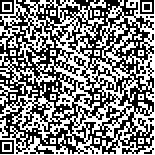本文已被:浏览 941次 下载 567次
Received:September 27, 2019 Published Online:May 20, 2020
Received:September 27, 2019 Published Online:May 20, 2020
中文摘要: 目的 分析无线远程监控镇痛泵在腹腔镜肠癌根治术后患者自控静脉镇痛(PCIA)中的镇痛效果。方法 对2017年7月至2018年6月择期行腹腔镜肠癌根治术且术后采用普通镇痛泵进行静脉自控镇痛(PCIA)的患者100例(对照组)以及2018年7月至2019年6月改用无线远程监控镇痛泵之后的腹腔镜肠癌根治术后PCIA患者102例(研究组)资料进行回顾性分析。对两组患者每日镇痛药物的使用量、镇痛不足的补救次数、麻醉医生收到镇痛不足信息之后进行有效处理的时间、患者按压自控镇痛的次数、术后疼痛评分、术后3 d内患者舒适状况评分、医患满意度、并发症发生率等资料进行对比分析。结果 两组患者均取得良好的镇痛效果。静息时,两组患者术后2、12、24、48 h的VAS评分差异无统计学意义(P>0.05),而术后6 h研究组的VAS评分明显低于对照组(P<0.05);活动时,两组患者术后12、24、48 h的VAS评分差异无统计学意义(P>0.05),而术后6、8 h研究组的VAS评分明显低于对照组(P<0.05)。研究组术后1、2、3 d的舒适度评分均高于对照组(P<0.01)。研究组术后24 h的镇痛药物用量大于对照组(P<0.01);在48 h内研究组的疼痛有效处理时间明显少于对照组(P<0.01);研究组自控按压镇痛泵的次数明显少于对照组(P<0.05)。两组患者经PCIA治疗48 h后,研究组患者的满意度明显高于对照组(94.12%vs85.00%,P<0.05)。在PCIA过程中,两组并发症发生率比较差异无统计学意义(P>0.05)。结论 无线远程监控镇痛泵的运用使腹腔镜肠癌根治术后PCIA的镇痛效果增强,可降低患者的疼[JP2]痛程度,提升术后舒适状况,该系统更加高效的镇痛管理对提高患者的满意度和降低并发症发生率都具有一定优势。
Abstract:ObjectiveTo investigate the analgesic effect of wireless remote monitoring analgesic pump in patient-controlled intravenous analgesia(PCIA) after laparoscopic colorectal cancer radical operation.MethodsA retrospective analysis was performed on the data of 100 patients treated with PCIA by common analgesia pump after laparoscopic colorectal cancer radical operation from July 2017 to June 2018 (control group) and 102 patients treated with PCIA by wireless remote monitoring analgesia pump after same procedure (research group) from July 2018 to June 2019.The daily dosage of analgesics,the times of remedy for insufficient analgesia,the time of effective treatment after anesthesiologists received inadequate information on analgesia,the pressing frequency of PCIA,the postoperative pain scores,the scores of patients′ comfort condition within 3 days after operation,the satisfaction of doctors and patients and the incidence of complications were compared between two groups.ResultsAs a whole,the analgesic effects were good in two groups.At rest,the visual analog scale (VAS) were similar between two groups at 2-,12-,24- and 48- hour after operation (P>0.05) and was significantly lower in research group than that in control group at 6 hours after operation (P<0.05).At activity,VAS scores were similar between two groups at 12-,24- and 48-h after operation(P>0.05) and were significantly lower in research group than those in control group at 6- and 8-h after operation (P<0.05),The comfort score in research group was statistically higher than that in control group at 3 days after operation (P<0.05).The dosage of analgesics used in research group was higher than that in control group during postoperative 24 hours (P<0.05).The effective treatment time of pain and the pressing frequency of PCIA in research group were significantly lower than those in control group within 48 hours after operation (P<0.05),and the patients′ satisfaction in research group was significantly higher than that in control group (94.12% vs 85.00%,P<0.05).There was no significant difference in the incidence of complications during PCIA between two groups (P>0.05).ConclusionsThe application of wireless remote monitoring analgesia pump can enhance PCIA′s analgesic effect,reduce the pain degree of patients and improve the postoperative comfort with more efficient analgesia management in increasing patients′ satisfaction and reducing the incidence of complications.
keywords: Wireless remote monitoring analgesia pump Laparoscopy Radical resection of intestinal cancer Patient-controlled intravenous analgesia
文章编号: 中图分类号: 文献标志码:B
基金项目:
引用文本:
